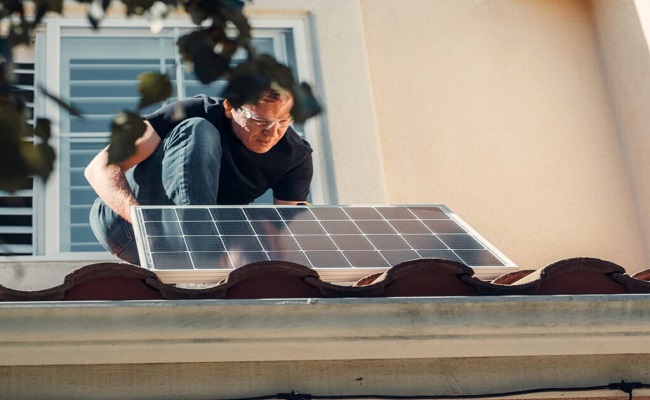Imagine this: You find yourself amidst the chaos of a natural disaster, your life turned upside down, your home in shambles, and your community in distress. The road to recovery seems long and daunting, but there's a glimmer of hope on the horizon - the power of solar batteries. In this guide, we'll explore how solar battery costs play a pivotal role in post-disaster recovery and rehabilitation. We'll navigate the highs and lows, just like the shortlist of options you might have in such trying times.
Navigating the Dark: The Importance of Solar Batteries
Disasters are unpredictable, and they strike when you least expect them. Whether it's a hurricane, earthquake, or wildfire, one thing is certain - they leave a trail of destruction in their wake. When the power grid goes down, it's solar batteries that can be your lifeline.
A Shortlist of Survival: Solar Batteries to the Rescue
In the aftermath of a disaster, you often find yourself confronted with a shortlist of essential needs - shelter, clean water, and electricity. It's the last item on the list that solar batteries can address. Let me share a story that illustrates the importance of having a solar battery in your arsenal during a disaster.
A few years ago, a close friend, Sarah, found herself in the midst of a devastating flood. Her home was submerged, and the power grid was down for days. Desperation set in as she realized the critical need for electricity to charge her phone, power a portable stove, and keep a small heater running. With limited options, she had to rely on a makeshift generator, which was not only noisy but also costly due to the soaring fuel prices.
Sarah's story is not unique. In disaster-stricken areas, access to fuel can be limited, and prices can skyrocket due to high demand. This is where solar batteries shine. They provide a clean and sustainable source of power, eliminating the need for fuel and the associated solar battery costs. Solar batteries ensure that you can charge your devices, keep warm, and cook food, all while reducing your carbon footprint.
Discounting the Traditional Grid: Solar Batteries for Resilience
The traditional power grid is vulnerable to damage during disasters, often leaving entire communities in the dark for extended periods. Solar batteries, however, offer a way to break free from this dependence on a fragile system. Let's delve into how they discount the traditional grid and offer a reliable alternative.
Imagine you're living in an area prone to frequent power outages. Each time a disaster strikes, you're left without electricity for days or even weeks. The inconveniences are numerous, from spoiled food to disrupted work and communication. This cycle can be financially draining and emotionally taxing.
Now, consider the power of solar batteries. They store energy from the sun, making you less reliant on the grid. During normal times, you can use them to reduce your electricity bills by tapping into stored solar energy. When a disaster hits, these batteries become a beacon of light in the darkness. With solar batteries, you can keep your essential appliances running and your devices charged, even when the grid fails.
The Intifada of Resilience: How Solar Batteries Empower Communities
In the face of adversity, communities often come together, displaying resilience that can only be described as an intifada against despair. Solar batteries, too, play a significant role in empowering communities to rebuild and recover. Let me share a heartwarming anecdote that exemplifies this resilience.
In the aftermath of a powerful earthquake, a small town named Hopeville faced utter devastation. Buildings crumbled, and the power grid was destroyed. As the days turned into weeks, the residents of Hopeville refused to surrender to despair. They organized themselves and leveraged solar batteries to set up communal charging stations, ensuring that everyone had access to vital communication and power for medical equipment.
The solidarity displayed by the people of Hopeville is a testament to the transformative power of solar batteries in post-disaster scenarios. These batteries not only provide individual households with resilience but also enable communities to stand strong together, just like an intifada rising against adversity.
The Path to Recovery: Investing in Solar Battery Resilience
In times of disaster, every decision you make can be critical to your survival and recovery. Investing in solar batteries is not just about saving on electricity bills; it's about safeguarding your well-being and the well-being of your community. Here's your action plan to harness the power of solar battery resilience:
Assess Your Energy Needs: Calculate the energy requirements of your household to determine the size and capacity of solar batteries you need. Consider essential appliances, communication devices, and medical equipment.
Choose the Right System: Research and shortlist solar battery systems that meet your needs and budget. Look for reliable brands and consult with experts for guidance.
Installation and Maintenance: Ensure proper installation by professionals and establish a maintenance routine to keep your solar battery system in top shape.
Community Collaboration: If possible, collaborate with your neighbors to create a community solar battery network. This not only reduces costs but also strengthens your collective resilience.
Emergency Preparedness: Develop an emergency plan that includes the use of solar batteries. Test your system periodically to ensure it functions seamlessly when needed most.
In conclusion, the significance of solar battery costs in post-disaster recovery and rehabilitation cannot be overstated. These resilient power sources provide hope and practical solutions when all seems lost. By discounting the traditional grid and fostering community intifadas of resilience, solar batteries light the way forward in the darkest of times. So, remember, in your journey towards recovery, investing in solar battery resilience can be your beacon of hope and source of strength. It's a shortlist worth considering, not just for you but for the community that surrounds you.
